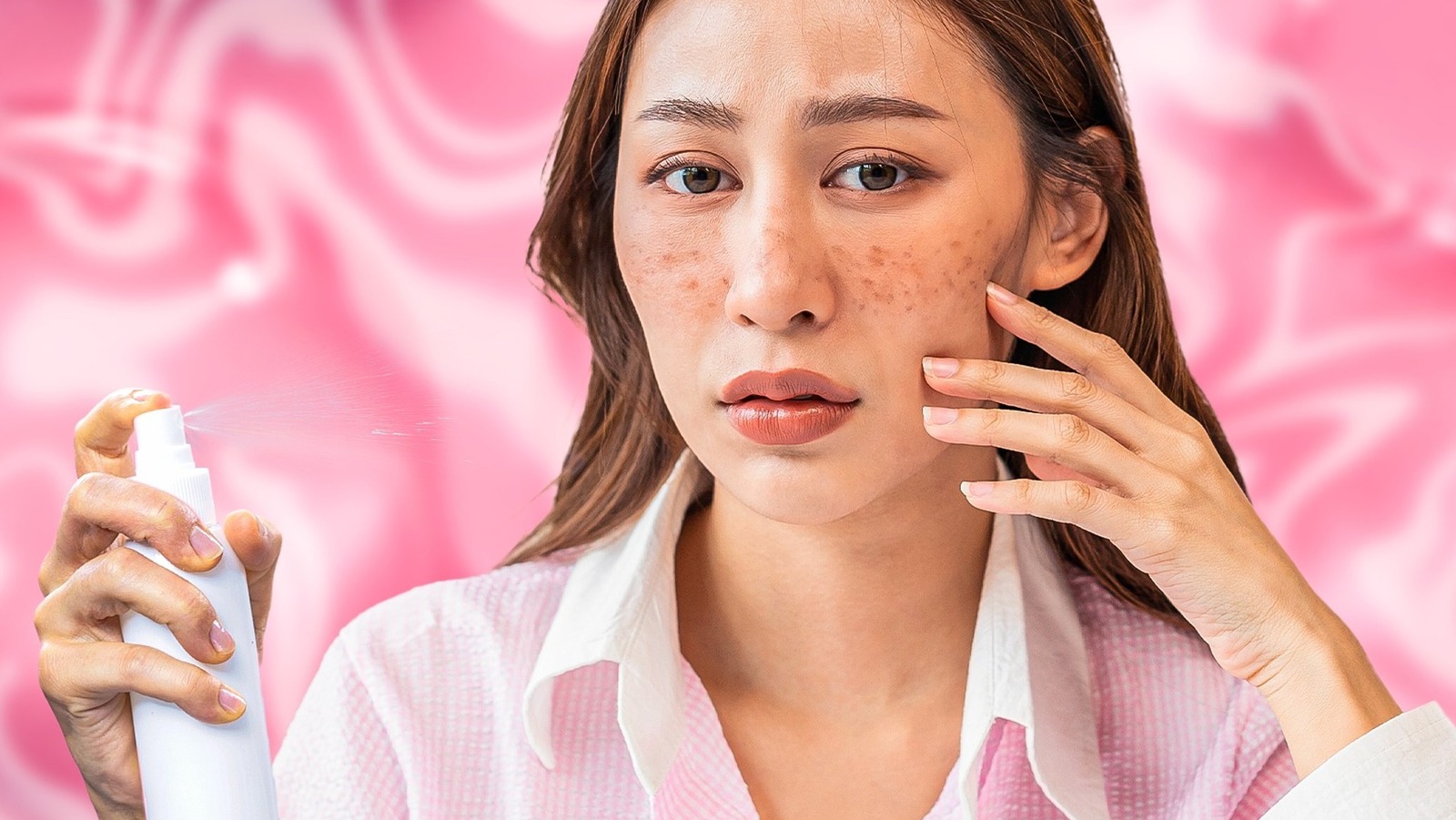
Can You Use Anti-Fungal Sprays To Treat Acne? Here’s What We Know – Glam
Acne is one of the most common and most difficult skincare problems a person can face. In addition to the stress of the way acne can look and feel, sufferers face the challenge of figuring out what type of acne they’re dealing with — could it be nodular or cystic? Bacterial or fungal? Until the question of what type of acne you’re affected by is determined, an effective treatment will likely remain elusive.
For those who know or suspect that their acne is fungal, over-the-counter anti-fungal sprays might seem like an easier, more accessible, and less expensive option than prescription treatments that require a visit to a dermatologist. Do they actually work, though? Unfortunately, the answer is often no. If the claims you’ve seen on social media have you nearly heading out to the drug store, allow us to save you a trip by explaining exactly why you should skip the anti-fungal spray when it comes to treating your acne.
Understanding active anti-fungal ingredients
 Gorodenkoff/Shutterstock
Gorodenkoff/Shutterstock
There is a simple explanation for why the anti-fungal sprays you can buy over the counter don’t typically work to treat acne: different types of fungal infections require specific anti-fungal ingredients. Fungal acne — as explained by Ohio State University — is caused by the overgrowth of a particular type of yeast known as Malassezia furfur in the hair follicles. Conditions like athlete’s foot and jock itch are caused by a type of fungi known as dermatophytes, per the Mayo Clinic. Applying one of the common over-the-counter anti-fungal sprays with active ingredients that target dermatophytes to acne caused by Malassezia furfur will not solve the problem.
The only way to truly resolve fungal acne is to treat it with medication that targets Malassezia furfur. These medications require a prescription. According to the Cleveland Clinic, a treatment regimen prescribed by a dermatologist will begin with a topical anti-fungal cream. If this does not result in significant improvement, an oral anti-fungal medication may be prescribed. Fortunately, online dermatology services like Curology now offer a convenient option for acquiring treatment, medication, and custom skincare products to get rid of acne from a dermatologist without needing to leave your home.
How to identify fungal acne
 Studio Romantic/Shutterstock
Studio Romantic/Shutterstock
Treating acne-prone skin on your own can — at best — feel like taking stabs in the dark and — at worst — end up making the problem worse. Attempting to treat fungal acne with products that target bacterial infections and vice versa can lead to a situation where you’re putting immense effort into caring for your skin, but only seeing its condition worsen, per Healthline. It is essential to determine what type of acne you need to treat before you start trying products or medications.
You can typically spot fungal acne by assessing the size and placement of individual blemishes and breakouts. While bacterial acne can cause painful single whiteheads, cysts, or nodules of varying sizes, fungal acne — as described by the Cleveland Clinic — usually appears in clusters of small, uniform itchy red bumps or whiteheads. It tends to appear and reappear near the hairline and sometimes continues up onto the scalp. If you suspect that you have fungal acne, skip the over-the-counter anti-fungal sprays and head to a dermatologist to save yourself a ton of frustration and start the healing process.































![iFi's GO Bar Kensei Dongle DAC Supports K2HD Technology With Some Samurai Swagger [Updated] iFi's GO Bar Kensei Dongle DAC Supports K2HD Technology With Some Samurai Swagger [Updated]](https://i0.wp.com/cdn.ecoustics.com/db0/wblob/17BA35E873D594/33FF/45A11/QTXOLJR4xDKSNMMk2WlTgjaIlvSgcYpeU1xJzUwIoYs/ifi-go-bar-kensei.jpg?w=768&ssl=1)

























